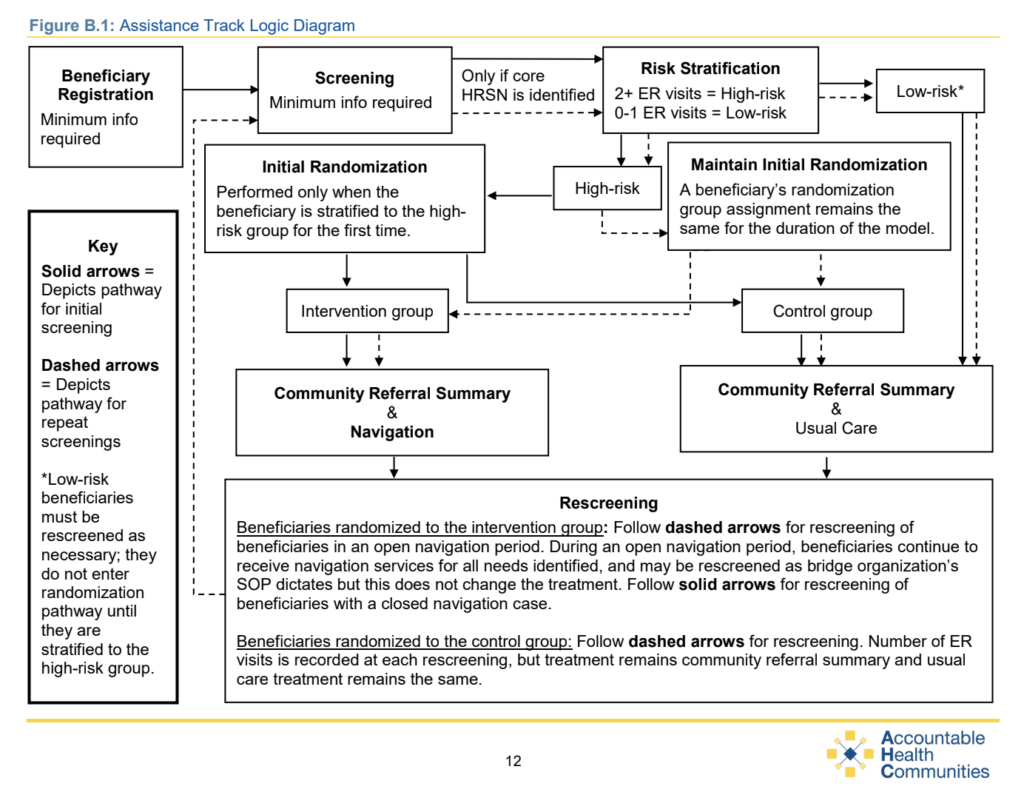Innovative Concept; Arcane Requirements
The Accountable Health Communities (AHC) grant provides free year-long case management for those who need it. The Center for Medicare/Medicaid is funding this large-scale study to test the idea that homelessness, hunger, and family violence all increase healthcare costs by sending people to the hospital again and again.
Though the concept is innovative, CMS is fundamentally a bureaucratic institution. The grant came with hundreds of pages of cryptic requirements for how our system must collect and process patient information. The system requirements were written to help data analysts, not social workers or patients.
These requirements that seemed to leave very little room for discovery. When this project landed on my plate, the project was communicated as “build a data entry tool for case management that exactly meets these complex data collection requirements.”

Legacy Limitations
Our existing bare-bones screening and navigation system was incompatible with the requirements that CMS had laid out, but other clients were actively using these tools. This meant:
- our rearchitecture needed to be backwards-compatible
- our migration had to continuously support our current users,
- our new tools couldn’t disrupt their current workflows, only improvement them.
Person Focused Partnership
We had the privilege of partnering with the Camden Coalition, one of the most innovative and person-focused nonprofits in the country. Their thought-leadership on the Social Determinants of Health paved the way for a study like AHC. Camden’s team of case managers would be our system’s end users.
Camden’s leadership wanted a system that went way beyond the data collection requirements. They wanted to-design a person-first case management system.
Rather than hack together a data collection system from the features we already had available for data entry, this partnership presented an opportunity to holistically design a new case management tool suite.
Identifying the Right Problem
When we received requirements already written in great detail, our problem statement became too narrow. The question “How can our system collect data that meets these complex requirements?” blocked us from building a tool that would get us new clients and serve users outside of this one grant.
I recentered the project on a new question: “How can our system provide tools that make it easier to navigate patients (and collect data incidentally when those tools are used).”
I believed that we could design a system that was flexible enough to collect the right data, while also serving all helping professionals and high-needs patients. By reframing the problem and understanding user needs, we could improve the system for all users, reduce data entry, and save case-workers time, which directly translates to more time with clients.